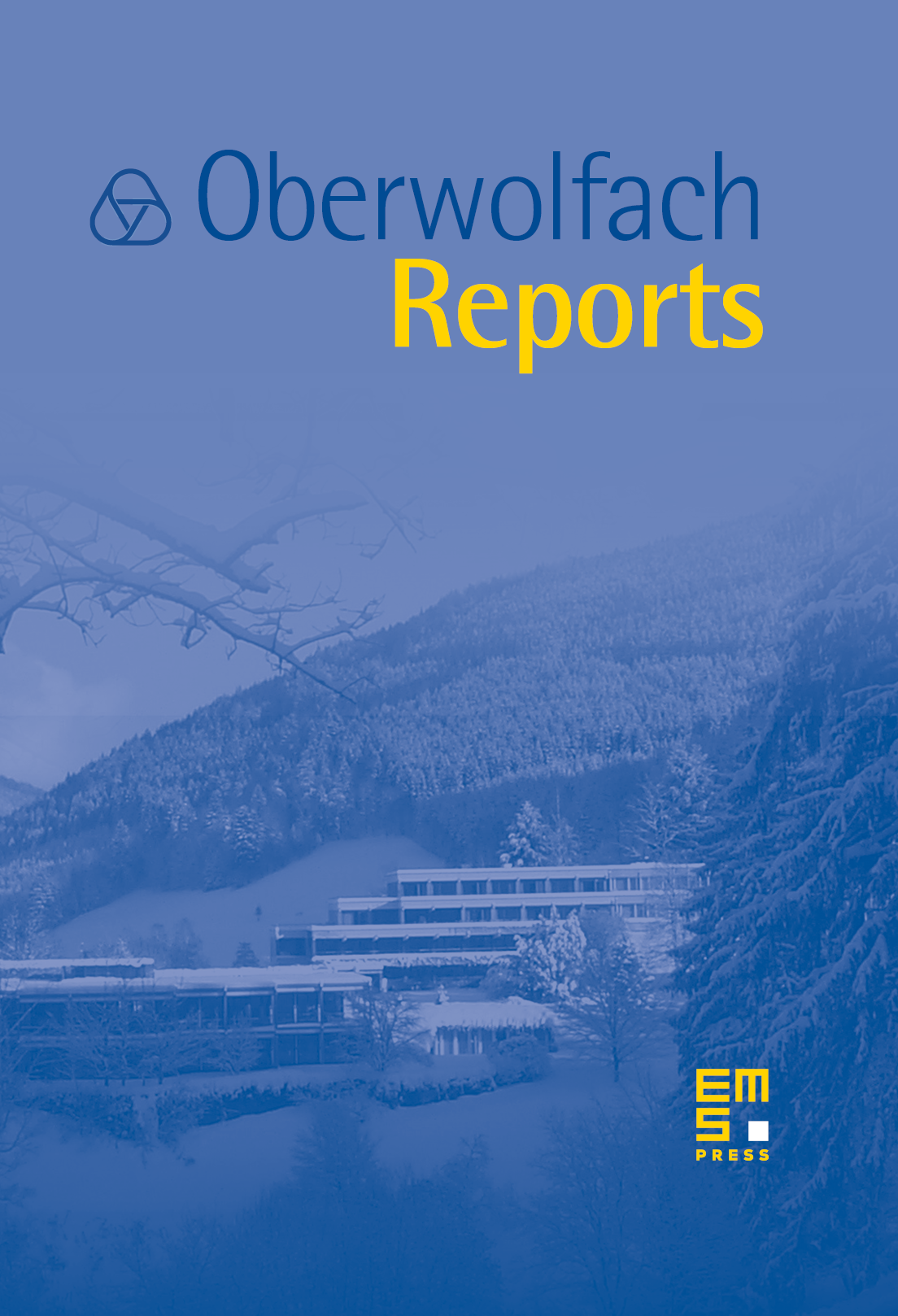Mini-Workshop: Hyperbolic Aspects of Phase Transition Dynamics
Rinaldo M. Colombo
Università degli Studi di Brescia, ItalyDietmar Kröner
Universität Freiburg, GermanyPhilippe G. LeFloch
Université Pierre et Marie Curie - Paris 6, France

Abstract
The workshop “Hyperbolic aspects of phase-transition dynamics”, organized by Rinaldo M. Colombo (Brescia), Dietmar Kröner (Freiburg) and Philippe G. LeFloch (Paris) was held February 24th–March 1st, 2008. We had 15 participants from five different countries. The atmosphere in the Oberwolfach Research Institute was very stimulating and has initiated many fruitful discussions and exchange of ideas. The participants of the mini-workshop thank the administration of the institute for the possibility for organize this meeting.
The Navier–Stokes equations for van der Waals fluids with viscosity and capillarity effects included form a challenging model of partial differential equations describing important physical phenomena. The associated set of first-order conservation laws is of hyperbolic or hyperbolic-elliptic type, and admits propagating discontinuities (shock waves). Understanding the singular limit when the viscosity and capillarity coefficients vanish is particularly challenging and is required to single out physically admissible, discontinuous solutions to the first-order conservation laws. These solutions turn out to contain both compressive shocks and undercompressive shocks which violate standard entropy criteria and must be characterized via the so-called kinetic relations.
There were two talks (N. Bedjaoui, P.G. LeFloch) on conservation laws with non-convex flux functions which are supplemented by nonlinear, possibly singular, diffusive and dispersive terms. Such systems of equations arise in the dynamics of complex materials undergoing phase transitions and in the dynamics of van der Waals fluids, viscosity and capillarity effects included. Questions which are related to existence, uniqueness and the properties of the viscosity or dispersion limits were discussed. In particular the kinetic relations associated with phase dynamics and nonclassical shocks have been considered. Closely related was a contribution of W. Dreyer about the derivation of the kinetic relations from global entropy inequalities.
Three other talks (D. Diehl, D. Kröner, C. Rohde) were dealing with the Navier–Stokes–Korteweg model including non-local formulations, the numerical approximation and the special structure of the interface conditions for the pressure fields respectively.
In two talks R.M. Colombo and P. Goatin reported on recent results about analytical and numerical techniques for hyperbolic phase transitions/non-classical shocks in models for vehicular or pedestrian traffic. In this model for high speeds (low densities) the flow is free and described by scalar conservation law and for low speeds (high densities) the flow is congested and is described by a system.
A different model for the phase transition in fluids is used by S. Müller. In order to take into account two different fluids he introduced a new function, the fraction of gas. This is controlled by an additional transport equation. Mass transfer across the interface is neglected.
Other models have been considered in the talk of F. Coquel. He has examined the links between a model consisting of two distinct partial differential momentum equations and a single momentum equation for the mixture plus an algebraic closure for governing the relative velocity.
H. Fan considered in his contribution a nonlinear system with viscosity terms for the specific volume, the velocity of the fluid and the weight portion of vapour in the liquid/vapour mixture. The simplified version of this model with zero viscosity has been considered in the talk of A. Corli. A global existence result for large data has been obtained.
S. Benzoni-Gavage gave a report on the stability analysis for planar subsonic phase boundaries and the existence of linear surface waves.
M. Shearer considered the surfactants of a free surface which is transported by the local speed of the free surface but also by diffusion of surfactant molecules on the surface.
Cite this article
Rinaldo M. Colombo, Dietmar Kröner, Philippe G. LeFloch, Mini-Workshop: Hyperbolic Aspects of Phase Transition Dynamics. Oberwolfach Rep. 5 (2008), no. 1, pp. 513–556
DOI 10.4171/OWR/2008/11